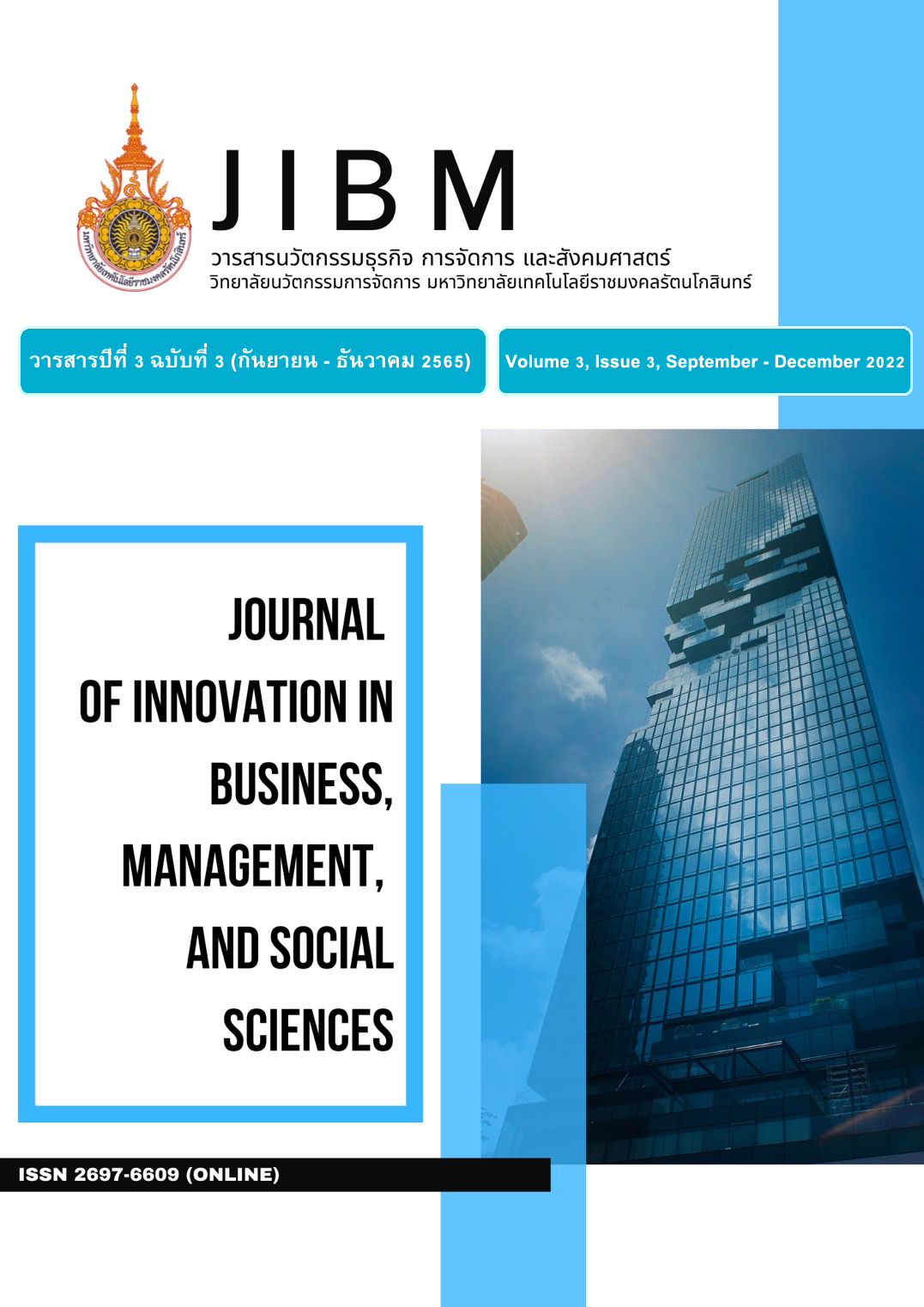ผลกระทบของข้อมูลโควิด-19 ต่อการคาดการณ์ผลตอบแทนของหุ้นสามัญ โดยการใช้ระบบคอมพิวเตอร์เรียนรู้ได้ด้วยตนเอง
คำสำคัญ:
โควิด-19, โครงข่ายประสาทเทียม , ระบบคอมพิวเตอร์เรียนรู้ได้ด้วยตอนเอง, การคาดการณ์ผลตอบแทนหุ้นสามัญบทคัดย่อ
งานวิจัยนี้พยากรณ์ผลตอบแทนของหุ้นสามัญในตลาดหลักทรัพย์แห่งประเทศไทยโดยใช้ระบบ Machine Learning ประกอบกับข้อมูลและปัจจัยต่าง ๆ ในอดีตที่มีผลต่อราคา โดยคาดการณ์ผลตอบแทน 1วัน 1 เดือน และ 3 เดือน โดยใช้อัลกอริทึม ที่แตกต่างกันของ Machine Learning 3 อัลกอริทึมคือ Artificial neural network (ANN) , Long Short-Term Memory (LSTM) และ Random Forest (RF) เพื่อทดสอบว่าอัลกอริทึมใด สามารถสร้างแบบจำลองในการพยากรณ์ผลตอบแทนของหุ้นโดยให้ค่าการพยากรณ์ที่แม่นยำที่สุด ผลการศึกษาแสดงให้เห็นถึงความสามารถในการพยากรณ์ผลตอบแทนของหุ้นโดยการใช้ข้อมูลของบริษัท ได้แก่ ข้อมูลในงบการเงิน ข้อมูลอัตราส่วนทางการเงิน ข้อมูลปัจจัยทางเทคนิค ข้อมูลเศรษฐศาสตร์มหภาค อัตราแลกเปลี่ยนเงินตรา ดัชนีหุ้น ดัชนีทองคำ และข้อมูลในอดีตของการซื้อขายหุ้น ประกอบกับการใช้ระบบ Machine Learning ส่งผลให้สามารถคาดการณ์ผลตอบแทนของหุ้นได้แม่นยำที่สุดเพื่อนำไปกำหนดกลยุทธ์ในการลงทุนที่เหมาะสม โดยจากงานวิจัยนี้แสดงให้เห็นว่าการคาดการณ์ผลตอบแทนของหุ้นในระยะสั้นนั้นการใช้ระบบ Machine Learning นั่นยังไม่เหมาะสมในการนำมาพยากรณ์ แต่หากเป็นการคาดการณ์ผลตอบแทนของหุ้นในระยะยาวแบบจำลอง Random Forest สามารถนำมาใช้ในการพายกรณ์ได้แม่นยำที่สุด
เอกสารอ้างอิง
Baker, M. R., & Patil, R. B. (1998). Universal Approximation Theorem for Interval Neural Networks. Reliable Computing, 4, 235–239. doi:https://doi-org.ejournal.mahidol.ac.th/10.1023/A:1009951412412
Basak, S., Kar, S., Saha, S., Khaidem, L., & Dey, S. R. (2019). Predicting the direction of stock market prices using tree-based classifiers. North American Journal of Economics and Finance, 47(47), 552–567. doi:https://doi.org/10.1016/j.najef.2018.06.013
Breiman, L. (2001). Random Forests. Machine Learning, 45(1), 5-32. doi:https://doi.org/10.1023/A:
colah's blog. (2015). Understanding LSTM Networks. Retrieved from http://colah.github.io/posts/2015-08-Understanding-LSTMs/
Han, S. (2019). Stock Prediction with Random Forests and Long Short-term Memory. (Master Degree). Iowa State University,
Jiemwiriyakul, B., Sirianuntapiboon, P., & Lorsubkong, P. (2019). Portfolio Return Prediction using Neural Network. (Master degree Individual Study). Mahidol University
Jozefowicz, R., Zaremba, W., & Sutskever, I. (2015). An Empirical Exploration of Recurrent Network Architectures. Paper presented at the Proceedings of the 32nd International Conference on Machine Learning, Proceedings of Machine Learning Research. https://proceedings.mlr.press/v37/jozefowicz15.html
Kim, K.-j. (2003). Financial time series forecasting using support vector machines. Neurocomputing, 55(1), 307–319. doi:https://doi.org/10.1016/S0925-2312(03)00372-2
Loh, W. Y. (2011). Classification and regression trees. WIREs Data Mining and Knowledge Discovery, 1(1), 14-23. doi:https://doi.org/10.1002/widm.8
Ma, Y., Han, R., & Wang, W. (2021). Portfolio optimization with return prediction using deep learning and machine learning. Expert Systems with Applications, 165, 1-15. doi:https://doi.org/
1016/j.eswa.2020.113973
Nilson, M. (2019). A visual proof that neural nets can compute any function. Retrieved from http://neuralnetworksanddeeplearning.com/chap4.html
Patel, J., Shah, S., Thakkar, P., & Kotecha, K. (2015). Predicting stock market index using fusion of machine learning techniques. Expert Systems with Applications, 42(4), 2162-2172. doi:https://doi.org/10.1016/j.eswa.2014.10.031
Srivastava, R. K., Koutník, J., Steunebrink, B. R., & Schmidhuber, J. (2017). LSTM: A Search Space Odyssey. IEEE Transactions on Neural Networks and Learning Systems, 28(10), 2222-2232. doi:https://doi.org/10.1109/TNNLS.2016.2582924



